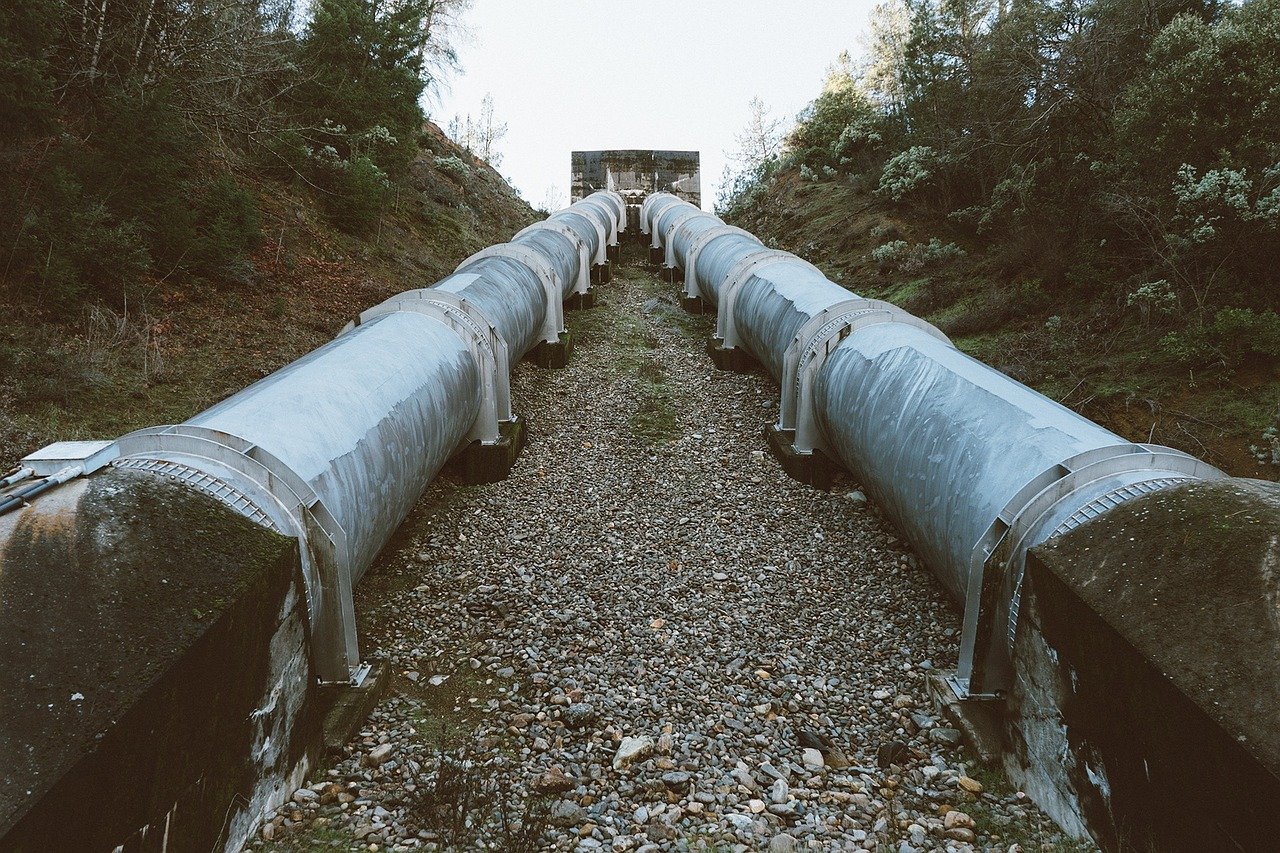The Global Environmental Puzzle: Piecing it Together
Imagine a jigsaw puzzle. Each piece of the puzzle is uniquely shaped, has its own place in the bigger picture and fits specifically according to the surrounding puzzle pieces it connects with. Often, it is easiest to complete this type of puzzle once a pattern has been found in the image, or the beginning of some type of connectivity between pieces is established.

By Brittnei Miller
March 15, 2014

Imagine a jigsaw puzzle. Each piece of the puzzle is uniquely shaped, has its own place in the bigger picture and fits specifically according to the surrounding puzzle pieces it connects with. Often, it is easiest to complete this type of puzzle once a pattern has been found in the image, or the beginning of some type of connectivity between pieces is established.
However, if you were to lose a piece of the puzzle during the solving process, the final picture would not look the same. Not only would this make the finished image look different, but it would also hinder an important connection from being made between the surrounding pieces. In addition to the lost piece, perhaps the corner of another piece becomes damaged preventing it from connecting correctly and reducing its intrinsic value to the puzzle as a whole. Because of this, other surrounding areas become affected and the ability of the pieces to work together as they should is compromised.
It’s possible that, you could infer what the final picture might look like had the pieces not been missing or damaged, but ultimately the puzzle will never function as it should have – until the missing piece is found or the damaged piece is fixed.
Now, apply this same scenario to our relationship with the environment. While there are many environmental factors and conditions that could be described as “pieces of the global environmental puzzle,” let’s broaden these into three categories – humans, biology, and ecosystem services. Humans connect to and influence environmental processes just as all other living and non-living organisms. This leads to a large connection being made with ecosystems. Through this relationship, all organisms are capable of altering how the many ecosystems function within the greater global environmental picture. In addition, maintaining and understanding the connection biology has to the services that ecosystems provide, and their potential impacts to humans, are vital to putting together the bigger picture. However, as mentioned earlier, when even one of these pieces is damaged, lost or misunderstood, keeping the rest of the global environmental puzzle together becomes difficult and can negatively impact surrounding environmental conditions.
As defined by the EPA, ecosystem services are, “The many life-sustaining benefits we receive from nature—clean air and water, fertile soil for crop production, pollination, and flood control.” Each of these aspects of our environment can be considered their own independent puzzle piece, but when properly connected, they work together to spread out and create the often economic value we find in nature. This economic value is made possible by the biodiversity which creates various life cycles within each ecosystem. Defined by the EPA as, “The variety and variability among living organisms and the ecological complexes in which they occur,” biology is in every connecting piece of the global environmental puzzle. Maintaining this biodiversity throughout the planet ensures the proper functioning and connectivity of ecosystems allowing each to provide us with various natural services.
Looking at just one specific example from the global environmental puzzle, coral reefs are rich in biodiversity and provide an important ecosystem service to coastal lands among other benefits. Because of the environmental factors and the biology that creates the proper habitat for the reefs to thrive, humans are also able to benefit from one of its ecosystem services. The World Wildlife Foundation (WWF) states that, “Coral reefs provide a physical barrier that reaches the sea surface, causing waves to break offshore and allowing them to dissipate most of their destructive energy before reaching the shore.” In many of the tropical areas where reefs grow, tsunamis and other storms have the potential, as we have seen, to inflict large amounts of on-land damage, death, and famine. While a coral reef will not completely stop the waves from crashing onto the shore, this biologically-rich ecosystem does have the ability to protect and potentially decrease the destruction of waves to on-shore homes, offices, and communities.
rich in biodiversity and provide an important ecosystem service to coastal lands among other benefits. Because of the environmental factors and the biology that creates the proper habitat for the reefs to thrive, humans are also able to benefit from one of its ecosystem services. The World Wildlife Foundation (WWF) states that, “Coral reefs provide a physical barrier that reaches the sea surface, causing waves to break offshore and allowing them to dissipate most of their destructive energy before reaching the shore.” In many of the tropical areas where reefs grow, tsunamis and other storms have the potential, as we have seen, to inflict large amounts of on-land damage, death, and famine. While a coral reef will not completely stop the waves from crashing onto the shore, this biologically-rich ecosystem does have the ability to protect and potentially decrease the destruction of waves to on-shore homes, offices, and communities.
In addition to saving lives, the coral reef ecosystem can also prove economically beneficial as less reconstruction and rescue efforts both globally and locally would be required in a storm stricken area. However, like many other examples of ecosystem services to humans, the valuable natural resource that coral reefs provide can be damaged or lost due to the effects of global warming if not properly understood.
 As coral reefs experience loss and possible damage to pieces of their unique biodiversity puzzle, negative effects to the larger ecosystem will lead to a broken-apart final global environmental image. Specifically, a potential threat to coral reef ecosystem services results from increases in carbon dioxide. When C02 levels increase, oceans become warmer and coral reefs undergo coral bleaching, where the algae and the polyps that create the reefs die. Certain reefs can take one year to grow up to an inch, making them highly susceptible to the effects of global warming. Because of this, it is important that we continue to understand how business and personal decisions influence global warming and thus any possible damages to biology and ecosystem services.
As coral reefs experience loss and possible damage to pieces of their unique biodiversity puzzle, negative effects to the larger ecosystem will lead to a broken-apart final global environmental image. Specifically, a potential threat to coral reef ecosystem services results from increases in carbon dioxide. When C02 levels increase, oceans become warmer and coral reefs undergo coral bleaching, where the algae and the polyps that create the reefs die. Certain reefs can take one year to grow up to an inch, making them highly susceptible to the effects of global warming. Because of this, it is important that we continue to understand how business and personal decisions influence global warming and thus any possible damages to biology and ecosystem services.
Currently, according to the United Nations Decade on Biodiversity, over 170 nations have developed national biodiversity strategies and action plans. Like these 170 nations, it is imperative that environmental sustainability and management plans continue to be created and engaged with at all levels and across every continent. Whether you are a part of a large organization, a privately owned business or simply as an individual, we are all a piece in the bigger picture. Developing and accelerating our sustainable actions plans by setting goals and acknowledging the quantitative data surrounding our impacts to the rest of the world’s ecosystems is imperative. By reporting emissions data, integrating sustainability into business management and continuity plans, and knowing at what level supply chain vendors engage with sustainability, we can ensure that the risk of damage or loss to biodiversity is decreased.
However, in order to begin connecting the rest of the puzzle, we must understand how the pieces first interact and where they belong. And just as a hand directs where each piece of a puzzle is placed, sustainability must direct how choices are made effecting decisions influencing the environment - from the corporate to the individual level.
Here at FirstCarbon Solutions (FCS), we may not know how to solve the entire global environmental picture at once, but we definitely know where to start. Together, through carbon reduction initiatives and data management, we can help connect the pieces of the global environmental puzzle while reducing the loss or damage to biology and ecosystems along the way. For more information, or to speak to one of our experts, click on the link below:
Related Articles
Environmental Impacts, Environmental Issues
By Adrienne Garcia on March 10, 2020
Environmental Impacts | Sustainability | Forests | Organization
By Kevin Bolland on December 23, 2019
Environmental Impacts | Environmental Assessments | CEQA | Environmental Planning | city planning
By Sharolyn Vettese on July 17, 2018
Environmental Issues | Sustainability | Environmental | Investments | Sustainability Reporting
Be a sustainability leader.
Our team supports you no matter where you are on your Sustainability Journey. Talk to us today to learn more.





